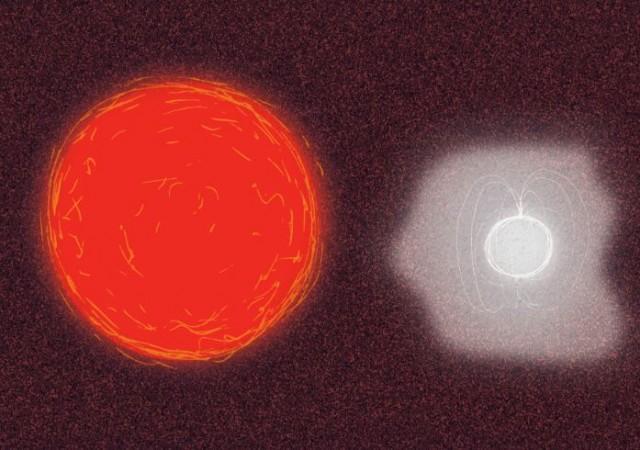
Space is full of mysteries that continue to baffle astronomers and other space enthusiasts around the world. European Space Agency's (ESA) Integral space observatory has witnessed one such strange event, in which a swollen red giant star emits winds to breathe life into the core of a slow-spinning dead star.
Integral initially detected an X-ray flare on August 13, 2017, from an unidentified source in the direction of the Milky Way's center. Subsequent observations later helped scientists discover that a slowly rotating neutron star with strong magnetic field had just begun to be fuelled by material from a nearby red giant star.
While stars paired together are quite common in the universe, the couple in question, comprising a neutron star and red giant, is a particularly a rare breed called a "symbiotic X-ray binary." According to scientists, only 10 such pairs of stars have been detected so far.
"Integral caught a unique moment in the birth of a rare binary system," Enrico Bozzo from University of Geneva and the lead author of the paper that describes the discovery, said in a statement. "The red giant released a sufficiently dense slow wind to feed its neutron star companion, giving rise to high-energy emission from the dead stellar core for the first time."
A strong magnetic field is usually a characteristic of a young neutron star while a red giant is considered to be much older. Therefore, the scientists are calling the newly detected pair a bizarre couple to have grown up together.
"It might be that either the neutron star magnetic field does not decay substantially with time after all, or the neutron star actually formed later in the history of the binary system. That would mean it collapsed from a white dwarf into a neutron star as a result of feeding off the red giant over a long time, rather than becoming a neutron star as a result of a more traditional supernova explosion of a short-lived massive star," Bozzo said.
Scientists said that they would continue to observe this peculiar pair as the flash of X-rays observed could just be a long "burp" of winds. However, they said that no significant changes had been observed so far.

















